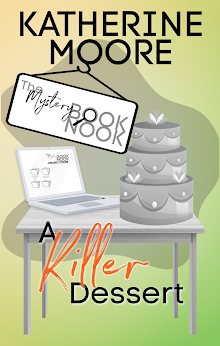 Like The Devil
Wears Prada and Debt and other
books about coming of age in New York, this debut novel introduces us to Tess,
who is a fish out of water in her sundress and cardigan, trying to bluff her
way through an interview when she’s way over her head. We like her, and we
enjoy being educated along with her, introduced to the nuances of taste—you
will develop a palate—and the intricacies of food service where meals are works
of art and presentations like little pieces of theater. We also love the vision
she has of her New York self—a sophisticated, better-dressed, better paid
version of herself who lives a life filled with art openings and concerts and
love and excitement. We KNOW that vision because we’ve all had a version of it.
Like The Devil
Wears Prada and Debt and other
books about coming of age in New York, this debut novel introduces us to Tess,
who is a fish out of water in her sundress and cardigan, trying to bluff her
way through an interview when she’s way over her head. We like her, and we
enjoy being educated along with her, introduced to the nuances of taste—you
will develop a palate—and the intricacies of food service where meals are works
of art and presentations like little pieces of theater. We also love the vision
she has of her New York self—a sophisticated, better-dressed, better paid
version of herself who lives a life filled with art openings and concerts and
love and excitement. We KNOW that vision because we’ve all had a version of it.
Tess is an “Everywoman” who is relatable, not just to
Millennials, but also to anyone who ever followed a dream from a dusty town
where the residents were obsessed with football and church to New York or Los
Angeles, or any other glittering metropolis where the possibilities seem
limitless and even the reality is better than the reality left behind. When she
first arrives in town, it seems like she’s always being wrong-footed and
judged, and her thoughts about the people she meets are bemused and sensible
and endearing. She is an OUTSIDER who wants to be an INSIDER in the worst way
and if there are few readers alive who can’t remember that feeling, even if
they won’t admit it. When she literally “earns her stripes” (the servers all
wear striped shirts while the back waiters wear white button-downs), we’re
pleased for her.
We gradually get to know the other people who work in
the restaurant—beautiful SASHA who could be a model except he’s so short and
who loves water-melon flavored Smirnoff; tyrannical CHEF who insists on silence
in the kitchen because “it’s church.” But mostly we, like Tess, are fascinated
by Simone and Jake, who aren’t a couple but who are so clearly bonded, so
clearly on each other’s wave-length that we wonder what is up with them.
Some of the best scenes in the book are the late nights at the bar after the restaurant closes with
the gossip and the backbiting and the showing off and the preening and the
courting. Some of those segments could
be lifted right from the book and they’d be entertaining. The author also often
includes interludes that are nothing but overlapping dialogue as the work of
the restaurant gets done.
The foodie stuff is openly sensual, from the silky
walnuts to the cheese that tastes like butter, only dirtier. We’re reminded of movies like Tampopo and Babette's Feast and Big Night and Chef and Mostly Martha--stories that are about love and family and loneliness and strangers who become friends.
It's frankly sensual in its exploration of tastes. There’s not a lot of plot here—the story is tied together by the seasons
and by Tess’ growth as a connoisseur of a server—and readers won't really care they'll be so caught up in the world. This is a great book for lovers of food and romance and character-driven stories.






No comments:
Post a Comment